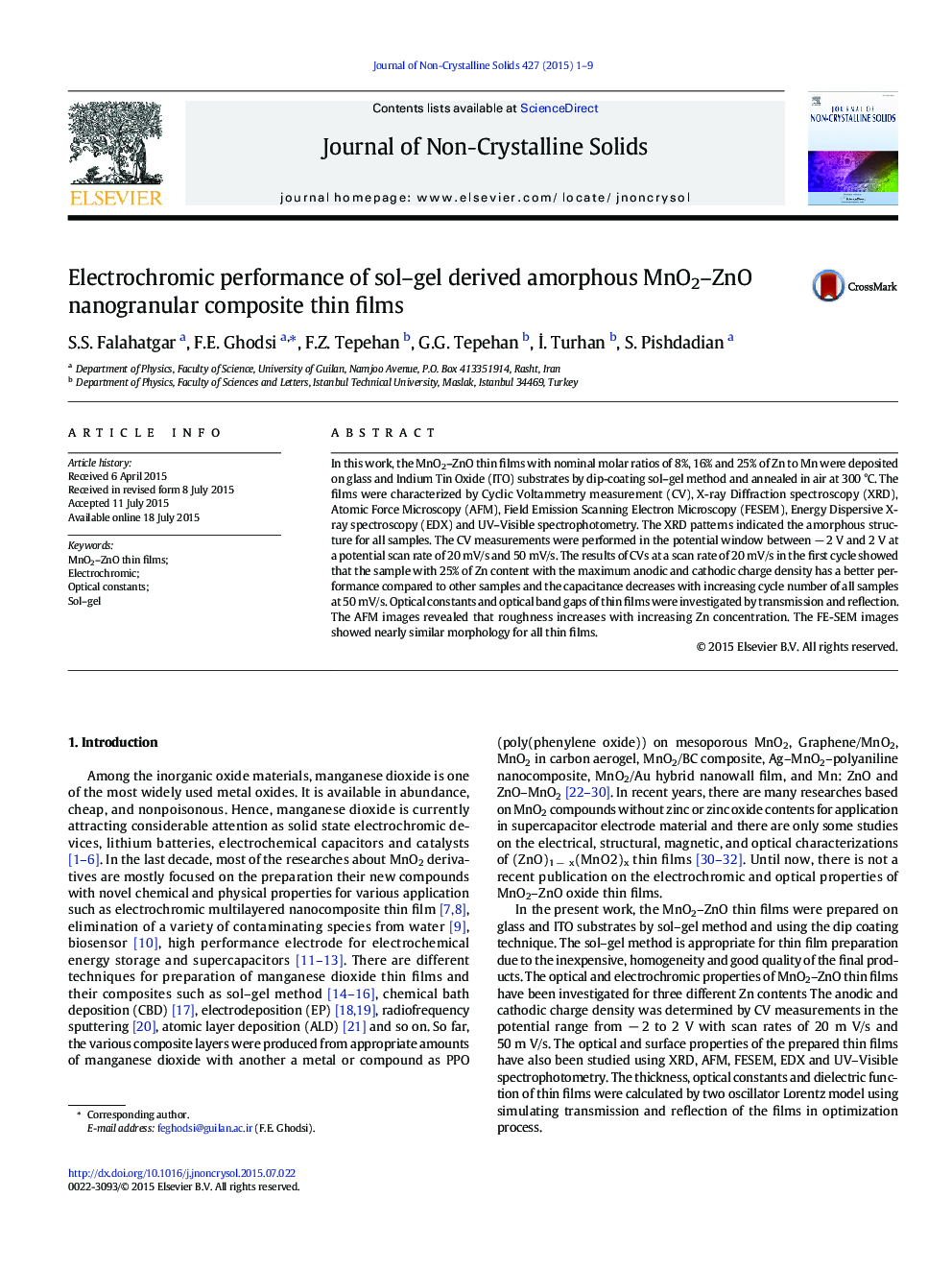| Article ID | Journal | Published Year | Pages | File Type |
|---|---|---|---|---|
| 1480657 | Journal of Non-Crystalline Solids | 2015 | 9 Pages |
•The electrochromic performance of MnO2–ZnO nanocomposite thin films is studied.•The nanocomposite MnO2–ZnO films exhibit amorphous nature.•The AFM results showed the enhancement of surface roughness with increasing of Zn.•FESEM micrographs revealed the granular surfaces.•Fractal dimension of surface increased at higher Zn content.
In this work, the MnO2–ZnO thin films with nominal molar ratios of 8%, 16% and 25% of Zn to Mn were deposited on glass and Indium Tin Oxide (ITO) substrates by dip-coating sol–gel method and annealed in air at 300 °C. The films were characterized by Cyclic Voltammetry measurement (CV), X-ray Diffraction spectroscopy (XRD), Atomic Force Microscopy (AFM), Field Emission Scanning Electron Microscopy (FESEM), Energy Dispersive X-ray spectroscopy (EDX) and UV–Visible spectrophotometry. The XRD patterns indicated the amorphous structure for all samples. The CV measurements were performed in the potential window between − 2 V and 2 V at a potential scan rate of 20 mV/s and 50 mV/s. The results of CVs at a scan rate of 20 mV/s in the first cycle showed that the sample with 25% of Zn content with the maximum anodic and cathodic charge density has a better performance compared to other samples and the capacitance decreases with increasing cycle number of all samples at 50 mV/s. Optical constants and optical band gaps of thin films were investigated by transmission and reflection. The AFM images revealed that roughness increases with increasing Zn concentration. The FE-SEM images showed nearly similar morphology for all thin films.
